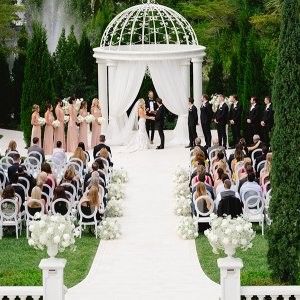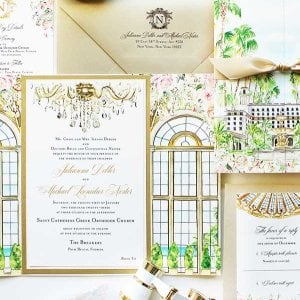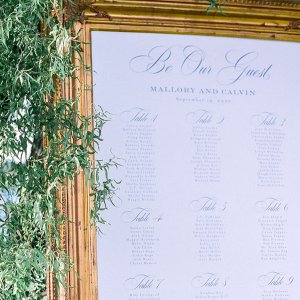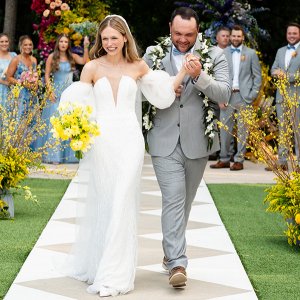In The Emily Post Institute's latest book, Emily Post’s Wedding Etiquette: 6th Edition, Emily's great-great-granddaughters Anna and Lizzie Post tackle modern-day wedding questions that the original etiquette expert never could've dreamed about, from how to use (wisely) use technology, the rules for same-sex weddings, and much more. Here, the fourth generation of Posts discuss how to choose meaningful wedding flowers.
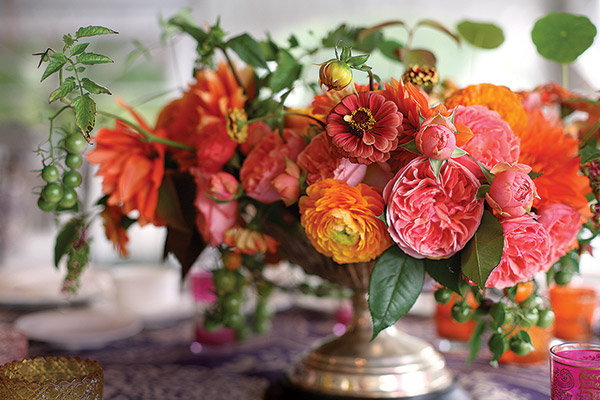
Photo Credit: Ariella Chezar
There are many ways to use flowers to personalize your wedding. The following are some ideas to make your celebration special and unique.
The Language of Flowers
In the 1800s and early 1900s, romance was often communicated with flowers. A young man would present a red rose, which symbolized love, to a young woman. She would return a purple pansy, which silently relayed the message “You are in my thoughts.” Traditionally, no words were spoken that would commit either party during this courtship, so knowing the language of flowers was of paramount importance if an accord was to be reached. Today, it is a charming idea to select flowers, and even herbs, that convey special floral messages between the bride and the groom.
Acacia: Friendship
Anemone: Expectation
Apple blossoms: Hope
Aster: Elegance
Azalea: Temperance
Baby’s breath: Innocence
Bay laurel: Glory
Calla lily: Beauty
Camellia: Loveliness
Carnation: Devotion
Chrysanthemum: Abundance
Daffodil: Regard, esteem, respect
Daisy: Gentleness
Freesia: Innocence
Gardenia: Purity
Heather: Future fortune
Heliotrope: Devotion
Ivy: Fidelity
Larkspur: Laughter
Laurel: Peace
Lilac: Humility
Lily: Majesty
Lily of the valley: Happiness
Myrtle: Remembrance, love, marriage
Orange blossom: Purity
Orchid: Rare beauty
Parsley: Beginnings
Peony: Bashfulness
Queen Anne’s lace: Trust
Rose: Love
Rosemary: Remembrance
Sage: Immortality
Stephanotis: Marital happiness
Thyme: Courage
Tulip: Passion
Violet: Modesty
Wheat: Prosperity, fertility
Zinnia: Affection
The Language of Color
Colors have meaning in many cultures. You may want to develop your floral color scheme around a particular color for its symbolic meaning.
Red or fuchsia: The color of love in China and India.
Pink: Represents romance, true love, purity and femininity in many cultures.
Green: The ancient color of fertility. A color symbolizing luck to modern-day Italians and Irish.
Red and yellow: The marriage colors of Egypt, India, Asia, and Russia.
Blue/turquoise: Attached to wedding ceremonies in Western countries (“...something borrowed, something blue”).
Purple: Represented wealth in ancient Greece and royalty in Africa. The classical color of the soul.
Blue and gold: Reinforces power, dignity, and rank.
Birth Month Flowers
Another special way to personalize and add meaning to floral choices is to combine the traditional birth month flowers of the bride and groom.
January: Carnation
February: Violet
March: Jonquil
April: Sweet pea
May: Lily of the valley
June: Rose
July: Larkspur
August: Gladiola
September: Aster
October: Calendula
November: Chrysanthemum
December: Narcissus
—Anna Post and Lizzie Post, as seen in Emily Post’s Wedding Etiquette: 6th Edition. Published with permission from It Books/HarperColilns Publishers. © 2014 The Emily Post Institute.
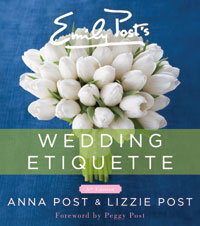
The Emily Post Institute has been answering etiquette questions for more than ninety years, and Emily Post’s Wedding Etiquette, 6th Edition, written by Emily’s great-great-granddaughters, Anna Post and Lizzie Post, will provide you with everything you need to know from past traditions to modern updates so you can approach your wedding with grace and ease.
- Anonymous's blog
- Log in or register to post comments

